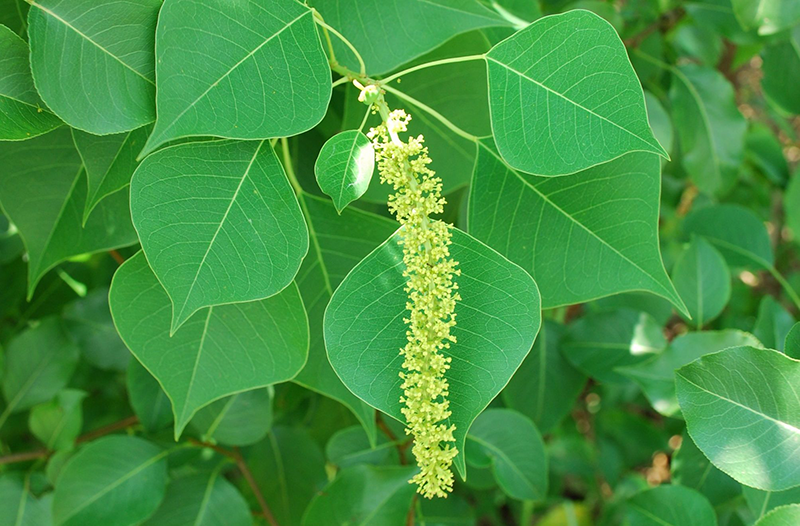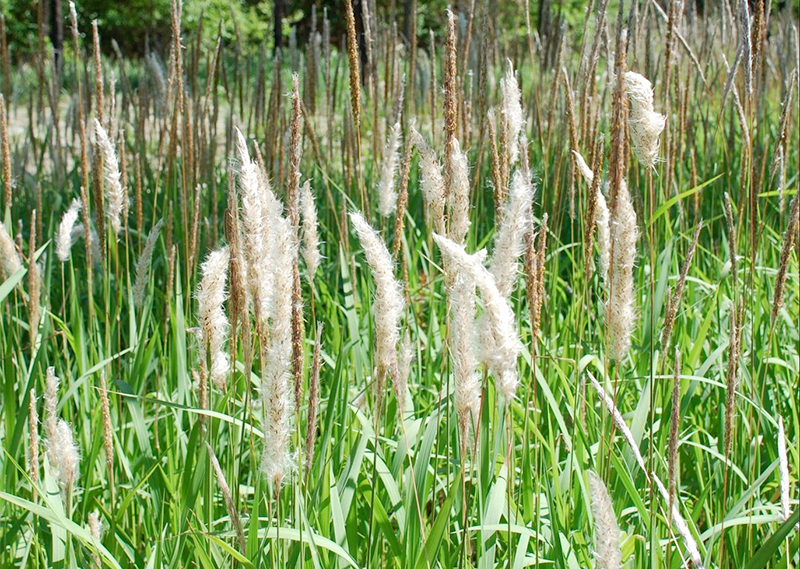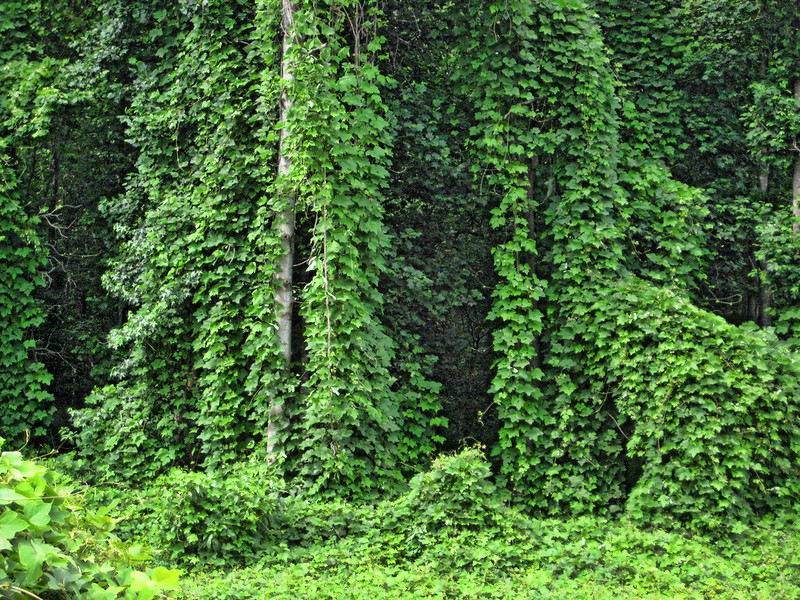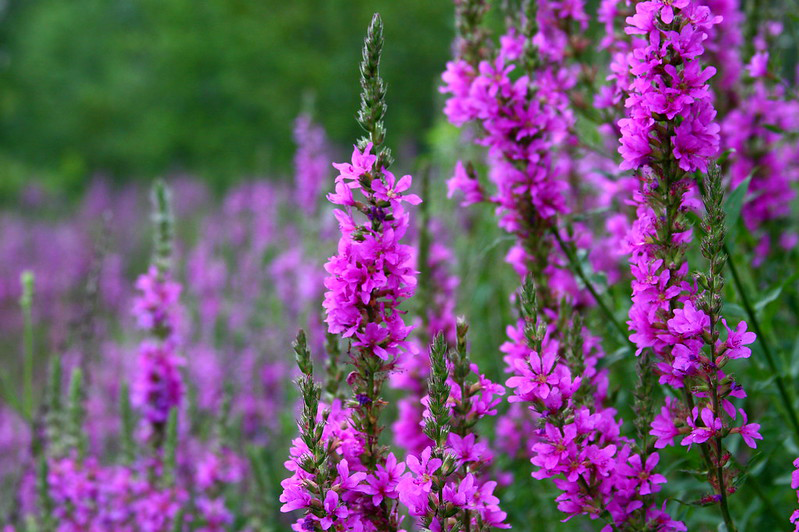Chinese Tallow Tree (Triadica sebifera)
Origin and Date of Introduction: China; 1772.
Pathway / Media: Escaped into natural ecosystems from nurseries.
Reason for Introduction: Deliberate, as ornamental first introduced by Benjamin Franklin.
Preferred Habitat: Forested areas; swamp edges.
Ecological / Economic Damage: Crowds out native plants. A single Chinese tallow tree, such as this specimen in the Manchac swamp, can produce 100,000 seeds a year, which can spread to surrounding areas by birds, water, and wind.

Photo: Alabama Cooperative Extension System (Auburn Univeristy, Alabama A&M University)
Futher Reading: USDA Invasive Species Information Center
Cogon Grass (Imperata cylindrical)
Origin and Date of Introduction: Asia; 1911-1920s.
Pathway / Media: Disturbed land paralleling highways; nurseries and packing material in shipping crates.
Reason for Introduction: Accidental, as packing material in shipping crates in Mobile, Alabama; deliberate, as an ornamental, to control erosion, and for livestock feed.
Preferred Habitat: Sandy soils with low nutrients, non-cultivated areas, and areas with some disturbance.
Ecological / Economic Damage: Decreases biodiversity among native grasses and the animals that depend on them; very flammable. Cogon grass invades disturbed areas such as highway shoulders, forming a dense mat that excludes native grasses.
Control Options: Herbicides and constant tillage; mowing and burning are not effective for long-term eradication.

Photo: Alabama Cooperative Extension System (Auburn Univeristy, Alabama A&M University)
Futher Reading: USDA Invasive Species Information Center
Kudzu (Pueraria lobata)
Origin and Date of Introduction: Europe; mid-1800s.
Pathway / Media: Nurseries, escaped cultivation.
Reason for Introduction: Deliberate, for ornamental reasons, Philadelphia Centennial Exposition; later promoted to control soil erosion during Dust Bowl.
Preferred Habitat: Almost everywhere, especially prevalent in southeastern United States because of climate.
Ecological / Economic Damage: Smothers and kills native trees and other vegetation. Kudzu grows phenomenally fast, casting a nearly continuous blanket of foliage over entire forests. The invasive Chinese vine has practically redefined local landscapes in the Feliciana parishes and adjacent areas.
Control Options: Herbicides; manual/mechanical removal; goats for biocontrol.

Photo: Frank DiBona, Flickr
Futher Reading: USDA Invasive Species Information Center
Purple Loosestrife (Lythrum salicaria)
Origin and Date of Introduction: Europe; mid-1800s.
Pathway / Media: Disturbed lands, waterways.
Reason for Introduction: Accidental and deliberate (as an ornamental).
Preferred Habitat: Riparian zones.
Ecological / Economic Damage: Degrades habitat, replaces native riparian vegetation and affects animals dependent on natives plants. Dense mats of purple loosestrife blanket areas throughout the South and the nation, and may soon enter Louisiana.
Control Options: Biocontrol insects for larger infestations; mechanical removal for small populations.

Photo: Liz West, Flickr
Futher Reading: USDA Invasive Species Information Center

